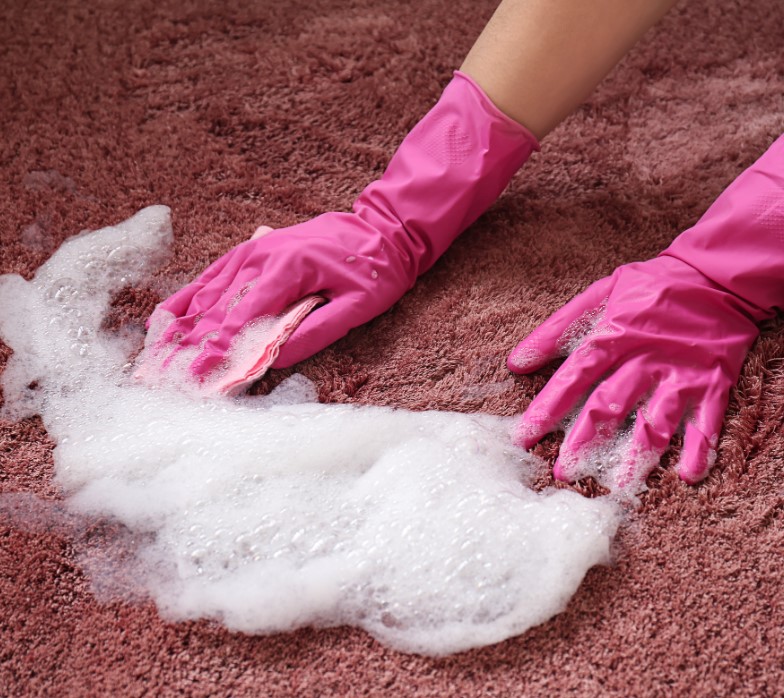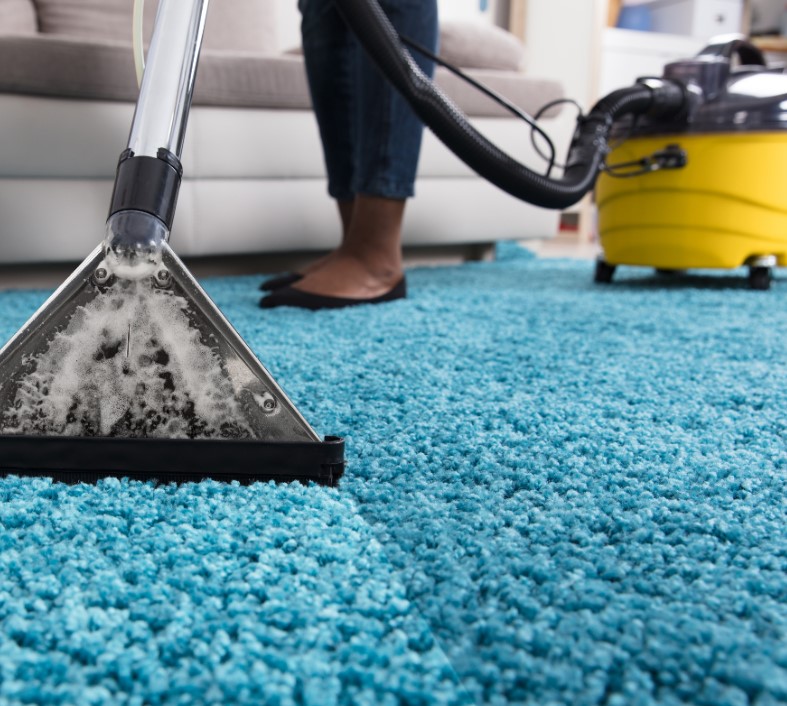
How to Get Paint Out of Carpet
Posted on February 28, 2023
 It’s happened. The fears you had before taking on that DIY painting project have actually come to life: there is paint on your carpet. Don’t panic! Even if you were as careful as possible and followed the steps to prepare your interior room for painting, accidents can happen. What is important now is taking action. Our step-by-step guide will help you know how to get paint out of carpet and back to looking as good as new in no time. Just take a deep breath, and follow the tried and true procedure from our expert painters.
It’s happened. The fears you had before taking on that DIY painting project have actually come to life: there is paint on your carpet. Don’t panic! Even if you were as careful as possible and followed the steps to prepare your interior room for painting, accidents can happen. What is important now is taking action. Our step-by-step guide will help you know how to get paint out of carpet and back to looking as good as new in no time. Just take a deep breath, and follow the tried and true procedure from our expert painters.
Before You Begin:
- Make sure you have a window or two open and fans running for proper ventilation.
- Don’t forget your protective gear! Gloves, a facemask, and even protective eyewear are generally good to wear when using cleaning products.
- If your paint has dried, gather all your materials. You’ll need:
- Paper towels or white rags
- A dull knife, scraper, or spoon
- Mild soap that does not contain bleach
- Carpet cleaner
Get Wet Paint Out of Carpet
Before you take any steps to clean paint out of carpet, take a look at the situation. Is the paint still wet? If your paint is still wet, it is time to act! Get a spoon or a putty knife and scoop the wet paint out of the carpet. Once you’ve scooped up as much as you can, lightly blot the area with a wet paper towel or white rag. Make sure you do not push or rub the paint deeper into the carpet or to spread the mess to other areas during this step. That’ll just create a bigger problem that is harder to clean up
Painter’s Tip: Don’t use a colorful rag for blotting a wet paint spill. You could end up transferring some of the dye from the rag to the carpet and be left with a bigger mess than what you started with!
Get Dried Paint Out of Carpet
If your area is dry, we’ve got a more intricate set of steps to follow. These steps are based on what type of paint is on the carpet. If you’re unsure what type of paint was spilled, it is time to take a look back at your paint can and assess. Water-based or latex paint will require a different clean up from oil-based paint.
Removing Water-Based Paint from Carpet
If you’re going to spill paint on your carpet, you’d probably want it to be water-based. Getting paint out of carpet is notoriously difficult, but water or latex paint has proved to be the easiest to clean up. Though it dries fast, you’re likely to achieve a clean look if you’re patient and careful.
Step One: Dry Blot
The first step to dealing with a water-based paint spill onto carpet is to blot the mess with a clean, dry paper towel or white rag to pick up any paint that has pooled on the top of the carpet. Since the area is already dry, this shouldn’t pick up too much, but it will help pull the stains out of the carpet’s surface.
Step Two: Prepare the Mixture
Mix a small amount of mild soap, such as Dawn’s dish soap, into a container of warm water. Be careful not to use too much cleaner here. This mixture will be used to reconstitute the dry paint so you can scrape it away. Make sure you’re working with hot to warm water throughout the process.
Step Three: Wet Blot
Take a clean white rag or soft-bristled brush (an old toothbrush works great) and dip it into the cleaning solution. Don’t take up too much water here; you want to avoid spreading the spill. Then, working from the outside of the spill to the center, use your paper towel, rag, or tooth brush to gently blot the area. Do not scrub or rub!
Step Four: Dry Blot Again, and Other Measures
Blot the area again with another dry rag or paper towel. Repeat the blotting process (dry, wet, dry) until you cover all affected areas and the paint is gone. If you’re unable to get any stains up out of the carpet, you can hit the area with heat by using a device such as a handheld clothes steamer, or you can move onto going over the area with carpet cleaner.
Removing Oil-Based Paint from Carpet
Oil-based paint is, unfortunately, much harder to remove from carpet. Cleaning it often requires a bit more extreme measures than soap and water––and it definitely takes more time. Oil-based paint is extremely adhesive and is made to be resistant to moisture. Here are the steps to get the best chances possible of removing oil-based paint from carpet:
Step One: Get Rid of the Excess
Our first step is the exact same as what you would do with a water-based paint. Blot the area with a dry material to pick up what you can. If nothing is coming up, use a putty knife to gently scare up what paint you can.
Step Two: Use that Carpet Cleaner
Most oil-based paints will need carpet cleaner or a carpet cleaning solution to get rid of the stain. It is best to read and follow the directions for each specific type of cleaner. In most cases, you will apply the cleaner to a rag and blot the area until it is saturated. You may want to test the solution on a covered part of the carpet to make sure it will not bleach it. Some solutions can take multiple minutes to work, so make sure you’re being patient.
Step Three: Blot with Cold Rag
Once you have applied the carpet cleaning solution and let it sit for a minute, you’ll need to blot the area with another rag soaked with cold water. This will remove the cleaner and hopefully a bit more residue. Finally, blot one more time with a dry rag or paper towel and repeat the process as many times as necessary.
Step Four: The Finishing Steps
Once you have the paint stains out, hit the area with carpet shampoo and run it over with a vacuum. This should help get the chemical and paint smell out at least a little bit. Plus, a vacuumed carpet always looks great!
Call CertaPro Painters® for Your Painting Needs
Accidents happen, especially when taking on a DIY painting project. We hope your process of getting paint out of carpet goes smoothly! Next time, skip this mess and leave it for the professionals to deal with. CertaPro Painters® makes sure your interior paint job is easy for you by taking care of everything from prep to clean up! That’s right: no more blotting will be required. Get started with our local painters by calling our office or filling out our free, no-obligation estimate form.


